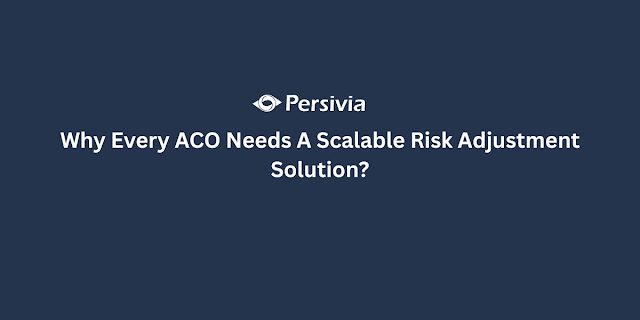Why Every ACO Needs A Scalable Risk Adjustment Solution?
Healthcare payment
models are shifting fast. Value-based care contracts now make up over 40% of all
healthcare payments, putting Accountable Care Organizations (ACOs) under
pressure to optimize their Risk Adjustment Solution
strategies immediately.
What Makes Risk Adjustment Critical for ACOs?
Risk adjustment software helps ACOs predict patient costs
accurately and receive proper reimbursements from payers. Without it, ACOs face
financial losses when treating high-risk patients whose care costs exceed
standard payment rates.
Here's what this
really means: Medicare Advantage plans use risk scores to determine payments. A
patient with diabetes and heart disease should generate higher reimbursement
than a healthy 30-year-old. ACOs that miss these coding opportunities lose
money on every encounter.
How Do ACOs Currently Handle Risk Adjustment?
Most ACOs rely on
manual processes that create bottlenecks:
- Chart reviews take weeks to complete
- Coding errors lead to payment delays
- Staff spend hours on documentation instead of
patient care
- Compliance issues arise from incomplete records
Manual risk
adjustment tools simply cannot keep pace with growing patient populations
and complex regulatory requirements.
Real Costs of Poor Risk Adjustment
ACOs without proper
systems face three major financial hits.
- First, they receive lower reimbursements
because patient risk scores are understated.
- Second, they waste resources on inefficient
manual processes.
- Third, they miss quality bonus payments tied
to accurate reporting.
Note: The average ACO loses $2.3 million
annually due to inadequate risk adjustment processes. The bigger your ACO gets,
the more money you lose without proper systems.
Risk Adjustment Features That ACOs Should Prioritize
Risk Adjustment Solutions needs specific capabilities to work
effectively:
- Real-time coding suggestions during patient
encounters
- Automated chart review and gap identification
- Integration with existing EHR systems
- Predictive analytics for population health
management
- Compliance tracking and audit trail
functionality
ACOs also need
solutions that scale with their growth. A system that works for 5,000 patients
might collapse under 50,000 patient records.
How Do Risk Adjustment Vendors Differ in Their Approaches?
Some vendors focus
purely on coding accuracy, while others emphasize workflow integration. The
best solutions combine both approaches with advanced analytics capabilities.
Look for vendors that
offer:
- Proven track records with similar ACO
implementations
- Transparent pricing models that scale with
usage
- Dedicated support teams familiar with ACO
operations
- Regular software updates that reflect
regulatory changes
What Results Can ACOs Expect from Proper Implementation?
ACOs typically see immediate
improvements in several areas. Most ACOs fix their documentation problems
within three months. Your staff stops wasting time on paperwork and starts
focusing on patients. Revenue increases as risk scores better reflect actual
patient complexity.
Long-term benefits
include better population health insights, improved quality scores, and
stronger negotiating positions with payers.
Takeaway
ACOs operating
without scalable Risk Adjustment Solutions are essentially flying blind
in value-based care contracts. The financial risks are too high, and the
operational inefficiencies too costly to ignore.
Smart ACOs recognize
that investing in proper risk adjustment technology isn't optional anymore.
It's the foundation for sustainable growth in value-based care.
Want to fix your risk adjustment headaches?
Persivia creates platforms that actually work for ACOs dealing with value-based
care mess. We plug into whatever system you're already using and handle the
stuff that's eating up your time.
Stop losing money on
manual processes that slow everything down. Persivia's platforms take care of
the complicated things so you can get back to treating patients.
Schedule A Consultation Today!


.png)
Comments
Post a Comment
Please do not enter any spam link in the comment box